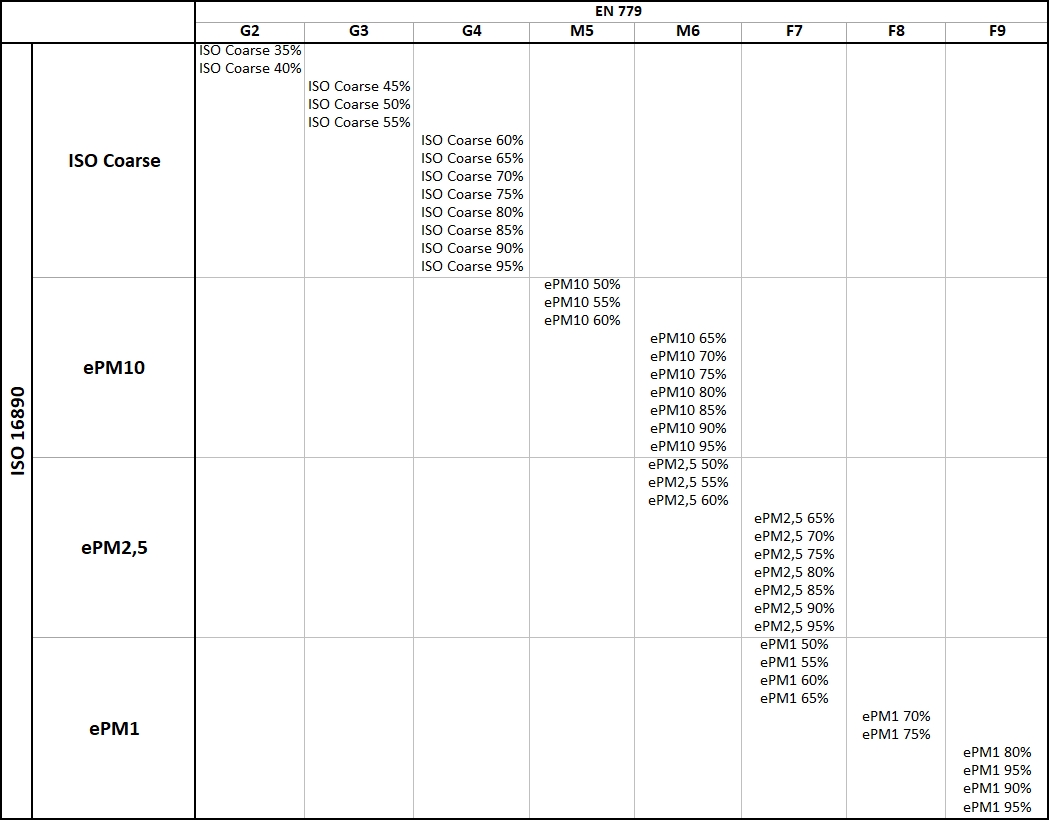
About Filter class
How to choose filter class
European standard EN 779 remained in effect from 2012 to mid-2018, when it was replaced by ISO 16890.
These two filter class standards cannot be converted, but the information below can be used as guidelines.
Comparison

Filters according to EN 779 standard
Filters are divided into different classes, dependent on the percentage of one size particles that are removed.
|
Class |
Performance |
Particle size |
|
|
Coarse filters |
G1 |
65% |
>5 μm |
|
G2 |
65–80% |
>5 μm |
|
|
G3 |
80–90% |
>5 μm |
|
|
G4 |
90%– |
>5 μm |
|
|
Fine filters |
M5 |
40–60% |
>5 μm |
|
M6 |
60–80% |
>2 μm |
|
|
F7 |
80–90% |
>2 μm |
|
|
F8 |
90–95% |
>1 μm |
|
|
F9 |
95%– |
>1 μm |
Filters according to ISO 16890-1:2016
This newer standard replaces the previous EN 779 "classes" with new "groups", which are now particle sizes.
|
|
Particle size range, µm |
|
Coarse |
0.3 ≤ × ≥10 |
|
ePM10 |
0.3 ≤ × ≤10 |
|
ePM2,5 |
0.3 ≤ × ≤2.5 |
|
ePM1 |
0.3 ≤ × ≤1 |
More details can be found here
To identify how much is removed by the filters in each group, they are followed by a percentage.
An example: "ePM1 70%" included in Dantherm part number 063446.
- 70% indicates the amount removed in percentage
- ePM1 indicates that the above-mentioned 70% is measured if particles are within 0.3 ≤ × ≤1 µm in size